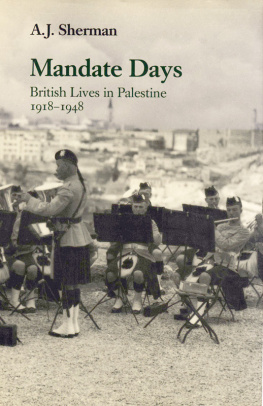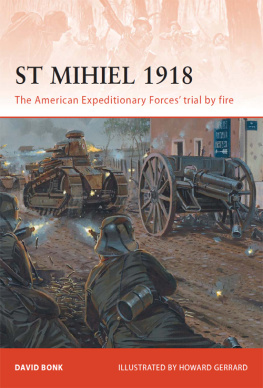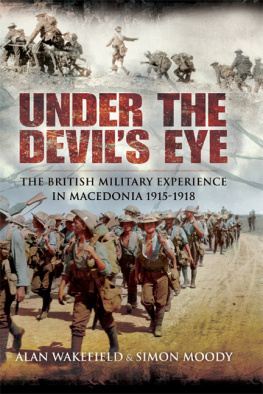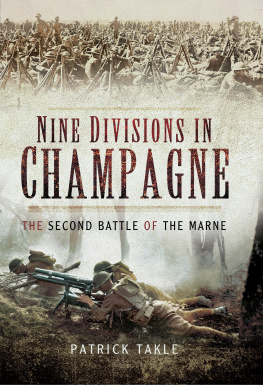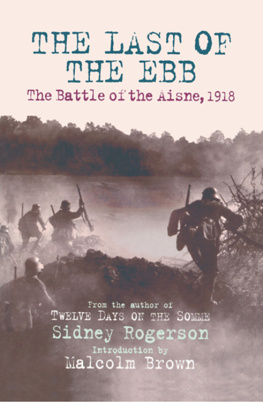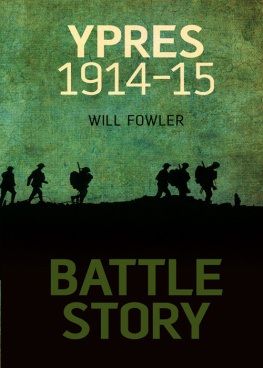
This edition is published by PICKLE PARTNERS PUBLISHINGwww.picklepartnerspublishing.com
To join our mailing list for new titles or for issues with our books picklepublishing@gmail.com
Or on Facebook
Text originally published in 1997 under the same title.
Pickle Partners Publishing 2014, all rights reserved. No part of this publication may be reproduced, stored in a retrieval system or transmitted by any means, electrical, mechanical or otherwise without the written permission of the copyright holder.
Publishers Note
Although in most cases we have retained the Authors original spelling and grammar to authentically reproduce the work of the Author and the original intent of such material, some additional notes and clarifications have been added for the modern readers benefit.
We have also made every effort to include all maps and illustrations of the original edition the limitations of formatting do not allow of including larger maps, we will upload as many of these maps as possible.
DEEP BATTLE IN WORLD WAR ONE: THE BRITISH 1918 OFFENSIVE IN PALESTINE
by
LCDR Paul A. Povlock USN
TABLE OF CONTENTS
Contents
TABLE OF CONTENTS
REQUEST FROM THE PUBLISHER
Abstract
Maneuver Warfare Theory achieved major acceptance during the 1980s, emphasizing the conduct of simultaneous offensive operations throughout the depth of the battlefield. With the victory of Coalition forces during Operation DESERT STORM, the deep battle theory gained instant credibility and the emphasis on joint operations reached a fever pitch. Yet, too often analysts have only used the war in Kuwait to prove or refute these operational concepts. All theories require more than one case study to validate or nullify their precepts. Other historical examples need to be examined using the model of maneuver warfare to give greater support for this theory.
While the First World War is often characterized by the futile attrition of the Western Front in France, many exceptional operational offensives were also conducted. The British September 1918 offensive in Palestine is a superb example of the proper application of combat forces at the operational level. General Edmund Allenbys use of regular army units, armored cars, cavalry, airpower and irregulars led to a major victory that hastened the collapse of Turkey and the Central Powers. Long before mechanized forces and maneuver theory had been developed, British Imperial forces executed an operational design stressing many elements of deep battle theory.
By examining the British offensive using the paradigm of maneuver warfare, additional evidence can be generated to add credence to the theory. The importance of the synergistic effect of combat arms when applied jointly is also shown. Maneuver theory must be better understood if this paradigm is used to create doctrine for the employment of the Armed Forces of the United States.
List of Illustrations
Figure No.
1 Maneuver Theory Diagram
2 The British 1918 Offensive in Palestine
3 MEGGIDO, 1918. Situation at Zero hour, 19th Sept., 1918.
4 MEGGIDO, 1918. Situation at 12 p.m. 19th/20th Sept., 1918.
5 MEGGIDO, 1918. Situation at 9 p.m., 20th Sept., 1918.
6 MEGGIDO, 1918. Situation at 9 p.m. 21st Sept., 1918.
THESIS
The British 1918 offensive in Palestine during the First World War demonstrates many of the tenants of the Maneuver theory of warfare. The intelligent use of mobile forces allowed the British Imperial Forces under General Edmund Allenby to decisively defeat their Turkish adversaries. The British success supports deep battle operations as a method to defeat the opposing enemy forces. The British offensive is compared to current understandings of maneuver warfare to buttress the theoretical understanding of deep battle.
MANUEVER WARFARE AND DEEP BATTLE
...Theory serves to pull up the weeds that error has sown everywhere ...Karl Von Clausewitz
At the beginning of the century the German author Hans Delbrck published what was to be the first book of his four volume treatise, History of the Art of War in the Framework of Political History. 1 In these volumes, Delbrck postulated that all theories of strategy could be divided into two types: the strategy of annihilation and the strategy of exhaustion or attrition. While both strategies could be effective, the two systems emphasized different factors. In the strategy of attrition the operational factors of mass and time were dominant. The subsequent evolution of attrition theory became primarily concerned with the destruction of enemy combat power or mass (M) over time (T).2 Each side tries to wear down his adversary while preserving his own strength. A proponent of this theory attempts to maximize the rate of reduction of the enemys mass while minimizing his own losses. Ground or terrain is merely seen as a means to modify the rate of exchange of forces. A hill or advance base may be taken in order to establish some tactical dominance and change the exchange rate in ones favor. The movement of forces otherwise has no effect other than to position them for battle. Attrition of the enemy continues until he sees the light and offers terms, or a further advance is authorized to directly threaten a vital interest of the enemy. If the weaker state fails to respond rationally, the process continues until one side is totally eliminated.3 Attrition theory is essentially two dimensional and static as it only considers mass and time. The theory breaks down in failing to encompass the effects of combat power in motion upon the enemy.
Maneuver theory picks up where attrition theory breaks down by taking into account the effect of mass over time and distance. This theory now brings into play the third operational factor, distance (D), to create a dynamic system. The interaction of mass, time and distance yields the awareness of combat power not merely as mass, but also as momentum, or mass times velocity (M x D/T), Operational momentum in conjunction with the mass of the enemy and the leverage ones own forces can exhibit forms the basis of maneuver theory.4
In Maneuver theory, the effect opposing forces have upon each other is a function of their relative positions. The side applying maneuver theory uses at least two different masses to affect the enemy, a holding force mass and a mobile force mass. These two masses along with the center of mass of the enemy comprise the three element system of maneuver theory. It is from the interaction of these three masses over time that the concept of leverage is derived.
Consider figure 1 (shown below). Here, the enemy center of mass (E) is acted upon by two other masses, the holding force mass (H) and the mobile force mass (M) over distance (D). In physical terms, leverage is produced when a force is applied to a rigid body anchored at a point to a fulcrum. The leverage is the force multiplied by the length of the lever. In military terms, the leverage is brought to bear by the mobile force (M) acting over a distance (D) with the holding force (H) acting as a fulcrum. The leverage is transmitted by the mobile force mass (M) multiplied over the distance (D).5 This leverage acts not to directly destroy the enemy, but to force him to move out of his position to avoid being encircled. This movement can lead to his destruction as the enemy force unravels under the strain of unexpected movement, or it may only force him to yield his post. In either case, the objective of the maneuver force is met by the enemys retreat, and with lower costs than if this movement had been attained through direct attrition.





